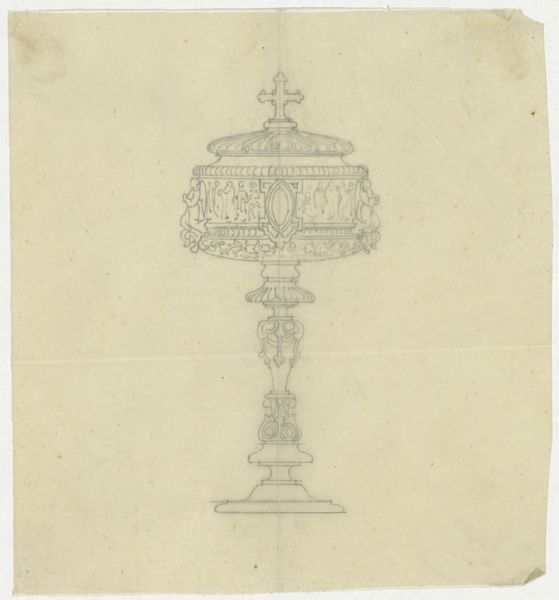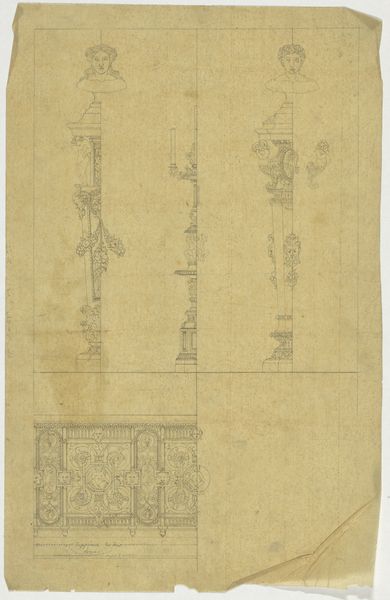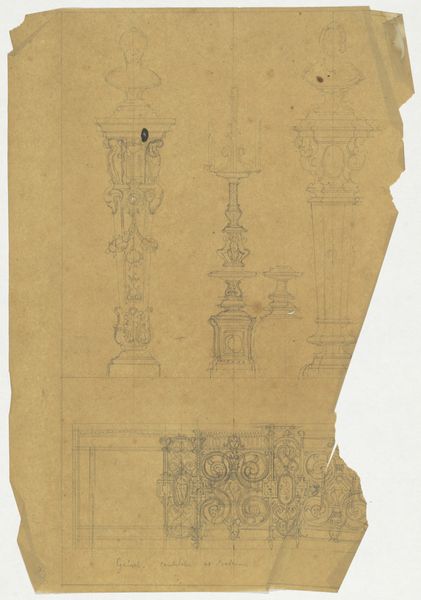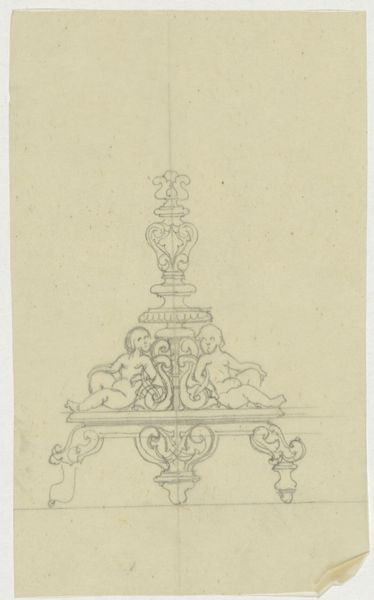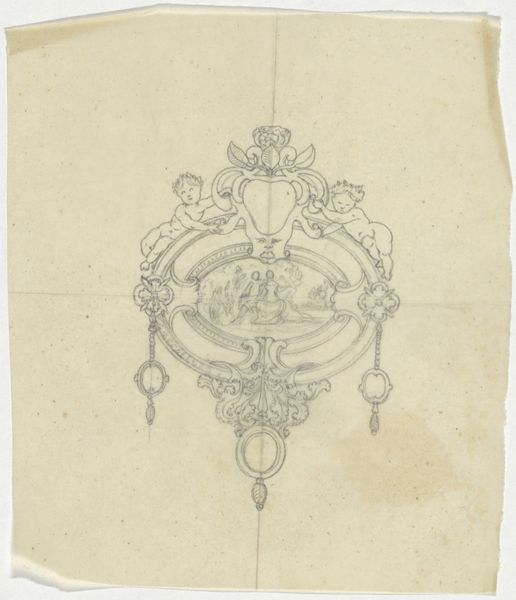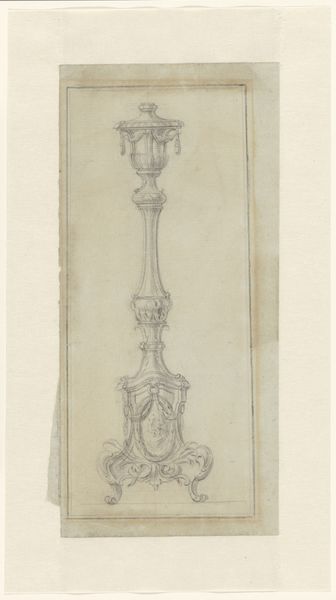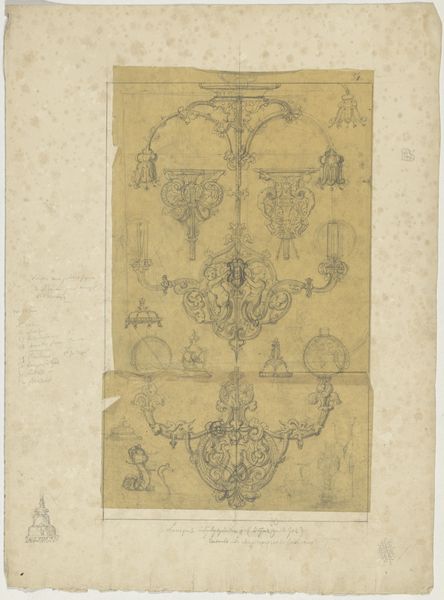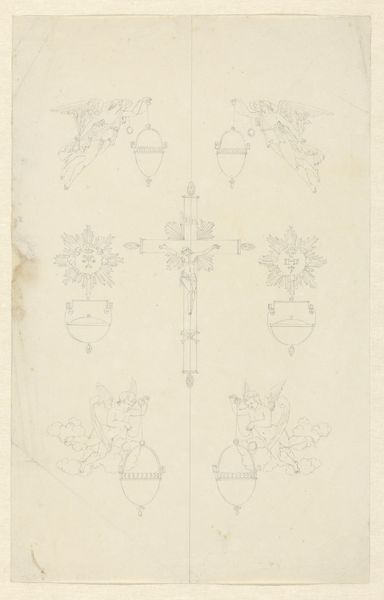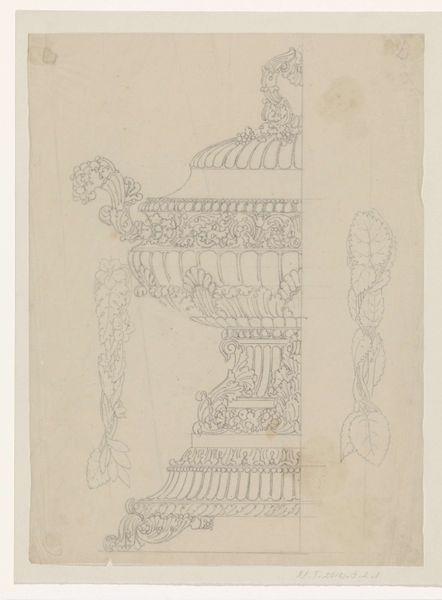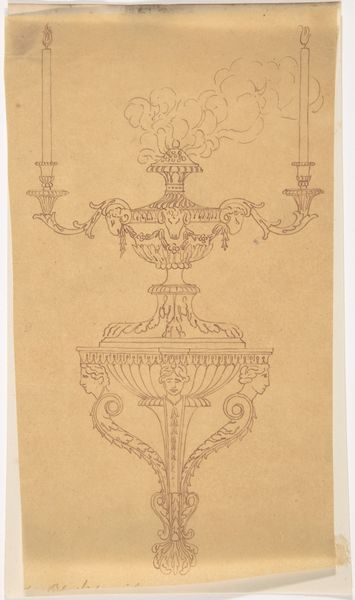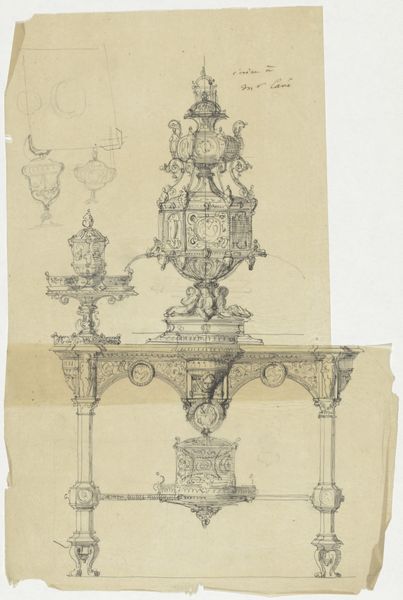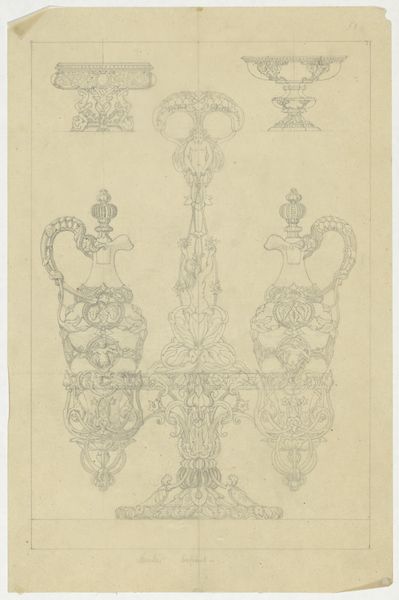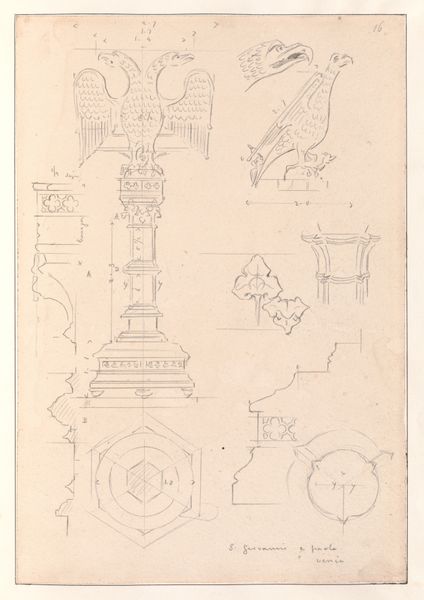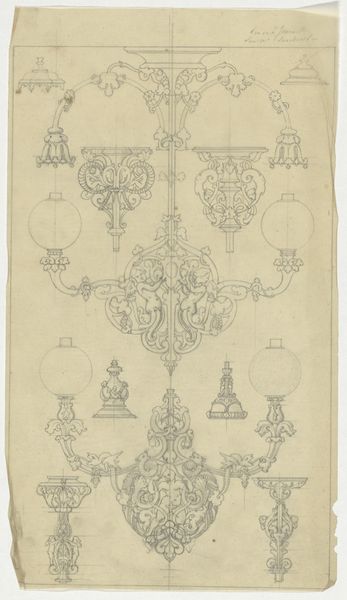
drawing, paper, pencil
#
drawing
#
paper
#
geometric
#
pencil
Dimensions: height 235 mm, width 463 mm
Copyright: Rijks Museum: Open Domain
Editor: This drawing, “Drie lantaarnlampen” by Firma Feuchère, was created sometime between 1830 and 1850. It's a pencil drawing on paper showing three different lantern lamp designs. The delicate linework gives it an almost ethereal feel, despite the precise geometry. What strikes you most about the composition? Curator: Immediately, I am drawn to the rigorous geometry governing the entire composition. Notice how each lamp, though unique in ornamentation, adheres to fundamental geometric principles: spheres, cones, cylinders. The draughtsman’s emphasis isn't on capturing fleeting impressions, but on the underlying structure, wouldn't you agree? Editor: Yes, absolutely. It's less about the light they cast and more about their architectural form. The meticulous details reinforce that. Is it possible to derive cultural meaning from the use of geometric shapes here? Curator: Intriguing. The regularity of the geometric figures suggests order and rationality, ideals perhaps prized in the design aesthetics of the time. These are forms easily and objectively measured, codified, replicated; hence, are inherently connected with concepts such as industrial production, utility, and the pursuit of a "perfected" aesthetic expression via technical execution. Consider the line weights too. How do they guide our eye? Editor: I see what you mean. The consistent, fine lines create a sense of precision and clarity. They emphasize the structure, not surface textures or light. Looking closely at how the lamps are linked via a single crossbar, I wonder, is it the visual repetition intended as a prototype for efficient manufacture and distribution? Curator: Precisely! An astute observation. Notice also, that despite their differences, the lamps also mirror the dimensions in inverse relationship, thus producing balance within a relatively simple configuration, highlighting an implicit seriality by which each variant implies its possible recombination. Editor: That's fascinating! I initially saw it as just a technical drawing, but seeing the structure behind it makes me rethink what the artist—or designer—intended to communicate. Curator: Indeed. By analyzing formal elements and geometric principles at work, the cultural function comes into a sharper, more sophisticated focus.
Comments
No comments
Be the first to comment and join the conversation on the ultimate creative platform.
